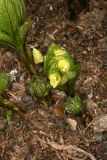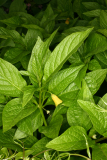Additional notes (click to expand)
Commemorative
Scopolia carniolica, variously called European Scopolia or Russian Belladonna, commemorates
the Italian physician, botanist, geologist and chemist, Professor Giovanni Antonio Scopoli (1723–88), also known as Johann Anton Scopoli and (Latinised) as Johannes Antonius Scopolius. He was born in Cavalese, in the Austrian Tyrol, and completed his medical training at Innsbruck, Austria. He worked as a doctor in Cavalese and Venice, but spent time collecting plants and insects in the Alps. He worked for 16 years as physician to the mercury miners in Idrija, publishing a book on mercury poisoning in the miners, De hydroargyro Idriensi tentamina (1761). While there he also published Flora Carniolica (1760) and Entomologia Carniolica (1763), on the flowers and insects of Carniola, in present-day Slovenia. He became professor of chemistry, mineralogy and metallurgy at the Mining Academy of Schemitz (now in Slovakia) from 1769–76, publishing his principles of mineralogy, Principia mineralogiae systematicae et practicae succincte exhibentia structuram telluris (1772).
Oakeley, Dr. Henry. (2012). Doctors in the Medicinal Garden. Plants named after physicians. Royal College of Physicians.
link
He moved to be professor of natural history (chemistry and botany) at the University of Pavia, Italy in 1777, publishing Fundamenta chemiae praelectionibus publicis accomodata (Fundamentals of chemicals adapted to public lectures, 1777) at the same time. The breadth of his knowledge was enormous; he published major works on world flora (Fundamenta botanica praelectionibus publicis accomodata (Fundamentals of botany), 1783) and fauna, translated and augmented a work on chemistry, and before his death published an account of the birds and animals collected by Pierre Sonnerat (1748–1814) during his voyages in Asia. He described Digitaria sanguinalis, Crabgrass, previously called Panicum sanguinale by Linnaeus, once a cultivated grain but now a pernicious weed in North America that competes with the wheat which has supplanted it, as well as describing beetles, a South American butterfly, bumble bees, salamanders and mushrooms. He was the first person to catch a live olm, Proteus anguinus, a blind amphibian which lives in the water of the limestone caves of southern Europe.
Oakeley, Dr. Henry. (2012). Doctors in the Medicinal Garden. Plants named after physicians. Royal College of Physicians.
link
Horticulture
S. carniolica var. brevifolia is a herbaceous perennial, to about 60cm tall, with dark green foliage emerging flushed with dark purple in late winter, and dying back in summer. Pale yellow, hanging, bell-shaped flowers are produced in spring
The Royal Horticultural Society https://www.rhs.org.uk/plants/16898/i-scopolia-carniolica-i-var-i-brevifolia-i/details
Medicinal
Scopolia carniolica was the first known source of scopolamine, used as a premedication prior to surgery. We grow the yellow-flowered var brevifolia and the brown-flowered var carniolica. Both are endangered from over-collection in the wild. Scopolamine, like all neurotoxins, causes relaxation in small doses, progressing to disinhibition, garrulousness, incoordination, toxic confusional states with amnesia, to coma. Urban mythology holds that people who wake up during the operation, if they have had scopolamine as a premedication, are unlikely to remember the incident. This may be a ‘good thing’ for all concerned.
Oakeley, Dr. Henry. (2012). Doctors in the Medicinal Garden. Plants named after physicians. Royal College of Physicians.
link
Restricted POM scopolamine
Acetylcholine antagonists. Contain atropine and scopolamine, used to dilate the pupil; speed up the heart; dry up saliva and gastric secretions, and to treat organophosphorous and mushroom poisoning & motion sickness.
Oakeley, Dr. H.F. (2013). Medicines from RCP plants label list 5-2013.docx.
Toxicity
Effects on multiple organs common to all anticholinergic activity. Has been used as an abortifacient; Fatur (2020) Econ Bot, 74, 140-158 ‘Hexing Herbs’.
Professor Anthony Dayan, 2022
'Humans/Pets: TOXIC if eaten.' HTA guidelines
HTA Guide to Potentially Harmful Plants, 3rd Edition (2022)
Geographical distribution
- Europe
Scopolia carniolica var. brevifolia
Family: SOLANACEAEGenus: Scopolia
Species: carniolica
Variety: brevifolia
Common names: Yellow Scopolia, Henbane Bell
Distribution summary: Eurasia
Habit: Perennial
Hardiness: H7 - Very hardy
Garden status: Currently grown
Garden location: Plants of the World (C)
Reason for growing: Commemorative, medicinal, toxic, prescription only medicine
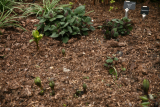
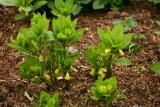



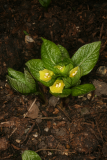
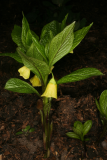

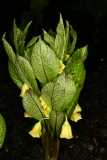
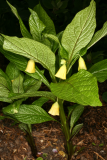
(syn. subsp. hladnikiana).jpg)
(syn. subsp. hladnikiana).jpg)
